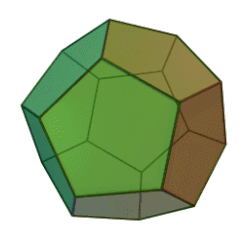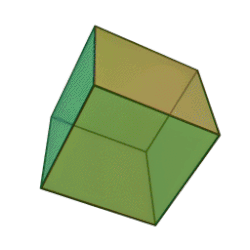Classical element

The classical elements are the basic substances (Greek: στοιχεῖον stoicheion), which - according to the occult tradition - were thought to build up the physical world. Most common in ancient cultures were the four elements fire, air, water and earth. Later they were supplemented by a fifth element, from which the classical four elements were said to have emerged. Aristotle thereby derived the existence of the four elements from four basic properties (dry, moist, warm and cold), with the changes of which the elements also change into each other. The aether (from Greek: αιτηρ aither) or ether as the fifth essence, the so-called quintessence (from Latin: quinta essentia) permeates the four elements as an unchanging and eternal essence, of which the heavenly spheres are also made. According to the Indian Vaisheshika, the ether corresponds to akasha.
Historical overview
Overview of the four elements in ancient Greece
Predecessors: Thales, Anaximes and Heraclitus
The Greek philosopher Thales of Miletus in Ionia held the view that all substances were only different aspects of the primordial substance water, for in his view water was present in the greatest quantity. He imagined that the Earth was a flat disc floating on water and that there was also water above the hemispherical firmament. His theories were widely accepted, but it was contested that water was the primordial substance. In the following centuries, astronomical considerations in Greece led to the conclusion that the heavens were a sphere, in the centre of which was the also spherical Earth.
Anaximenes - also from Miletus - came to the conclusion that air was the original substance and was compressed towards the centre of the universe, giving rise to the other elements of water and Earth.
Heraclitus from the neighbouring city of Ephesus was of the opinion that the ever changing and transforming fire must be the original substance, since everything in the universe changes.
Empedocles
The doctrine of the classical four elements had its broadest impact through the Greek natural philosopher Empedocles in the 5th century B.C. Empedocles' predecessors had only attributed peculiarities to the four elements that we assign to the states of matter today. An example of this is the liquefaction of a gas by pressure in Anaximenes. The fact that Empedocles' predecessors already assigned solids to the element earth, liquids to water and gases to air corresponds to today's concept of the states of matter. Fire can be associated with plasma, the forth fundamental state of matter. A connection with energy in the broadest sense can also be established.
This scheme was retained by Empedocles. In addition, Empedocles attributed a peculiarity to the elements that corresponds to our present-day elements from the periodic table of the chemical elements: he assumed that the four elements were eternally existing and unchanging basic substances that form the variety of substances through mixing.
Even if these principles already point to modern science in parts, it must not be forgotten that Empedocles first introduced the four elements as gods. However, there is no agreement as to which god he assigned which element. Some authors assume that fire was assigned to Zeus, air to Hera, earth to Aidoneus (Hades) and water to Nestis (Persephone), others interpret Empedocles' texts in the sense that Hera was assigned to earth and Aidoneus to air.[1][2][3][4][5].
Through the assignment of the elements to deities, the four elements were given further qualities that extend not only into the medical field (cf. humoral pathology) but also into psychology. From the afterglow of ancient clairvoyance, each element was seen to be associated with certain psychic qualities. Fire was associated with determination, ambition and commitment. Water is the gentle element, the yielding and soft one, the air element is lively, flexible and change-oriented and finally earth stands for the solid, rigid and stable. All things thus possess a characteristic share of the four elements. Feathers are predominantly air, stones have a high proportion of earth element. Pumice in turn has a high proportion of the air element, quartz the water element and pyrite a proportion of the fire element[6]. According to this, an individual mixture of these four elements also applies to humans. Diseases are therefore an imbalance of the elements. In earlier times, physicians treated illnesses by supplying a missing element through food or medicinal plants, or they deduced that there was too much. Drainage procedures, which are used by alternative practitioners today, were originally based on this idea.[6][7]
Plato and Aristotle
 |
 |
 |
 |
 |
|
| Dodecahedron - Cosmos | Tetrahedron - Fire | Octahedron - Air | Icosahedron - water | Cube - Earth |
The four-element doctrine was further developed by later Greek philosophers. Plato assigned a regular body to each of the four elements.
Aristotle gave the classical definition of the element, which was ultimately adopted much later in chemistry, although there it was no longer related to the four classical elements, but to the far greater number of chemical elements:
„Let an element therefore be to us that among the bodies into which the other bodies are divided as into one potentially or actually contained in them (namely, in which of these two ways is still in dispute), and which itself can no longer be divided into others different in kind; for something of this kind all and in all things want to call the element.“
Aristotle derived the four elements dynamically from the properties warm/cold (θερμὸν / ψυχρὸν thermòn/psychròn) and dry/humid (ὑγρὼν / ξηρὸν hygròn/xeròn): Fire = warm + dry, Air = warm + moist, Water = cold + moist and Earth = cold + dry. These pairs of opposites, which Aristotle understands not merely as subjective impressions but as objective realities that can also cause or experience changes, are, in his view, grasped through contact with the sense of touch, which appears to him to be more suitable for perceiving the physical-bodily world, to which he reckons the elements, than the sense of sight, which is higher in itself. The term "sense of touch" is very broad; one should actually speak of a kind of "sense of feeling", because fire and air cannot be touched in the actual sense, but they can be felt:
„But opposites according to touch are the following: warm - cold, dry - wet, heavy - light, hard - soft, gluey - brittle, rough - smooth, thick - thin. But of these, heavy and light are not capable of effect and suffering; for they are not comprehended by causing something else or suffering from something else. But it must be so that the elements are able to act and suffer together. For they mix and change into one another.
Warm and cold and dry and wet, on the other hand, are understood by the fact that they are partly capable of action and partly capable of suffering: For 'warm' is that which unites homogeneous things (for the separation which, as they say, brings about fire, is a uniting of the homogeneous - for it goes hand in hand with this that it separates out the foreign), 'cold', on the other hand, is that which unites and closes equally for the related and the dissimilar; 'wet', on the other hand, is that which is indeterminate by its own boundary, yet supple for it; 'dry' that which, though sharply delineated by its own boundary, is nevertheless inflexible. Thin and thick and glutinous and brittle and hard and soft and the other differences, however, are from these.“
Literature
- Isaac Asimov: Kleine Geschichte der Chemie. Vom Feuerstein bis zur Kernspaltung, Wilhelm Goldmann Verlag, München 1969
- Wilhelm Strube: Der historische Weg der Chemie, VEB Deutscher Verlag für Grundstoffindustrie, Leipzig 1976
References
- ↑ Ingrid Straube: Die Quellen der Philosophie sind weiblich: Vom Einfluss weiser Frauen auf die Anfänge der Philosophie. ein-FACH-Verlag, Aachen 2001, S. 31–32 ISBN 978-3-928089-29-6
- ↑ Walter Bröcker: Die Geschichte der Philosophie vor Sokrates. 2. Aufl. Klostermann, Wiesbaden 1986 ISBN 978-3-465-01706-6
- ↑ Egon Gottwein: Vorsokratische Philosophie
- ↑ Arthur Fairbanks: Empedocles Fragments and Commentary
- ↑ Walter L. Strauss/John T. Spike (Hrsg.): The Illustrated Bartsch. New York 1978 -: Numerous depictions of the four elements by various artists from the 15th to the 19th century in several volumes.
- ↑ 6.0 6.1 Gernot und Hartmut Böhme: Feuer, Wasser, Luft, Erde. Eine Kulturgeschichte der Elemente. Beck, München 1996, ISBN 3-406-41292-0.
- ↑ Hildegard von Bingen: Heilkraft der Natur. „Physika“. 2. Aufl. Christiana-Verlag, Stein am Rhein 2005, ISBN 978-3-7171-1129-0.
- ↑ Aristoteles: Vier Bücher über das Himmelsgebäude. Zwei Bücher über Entstehen und Vergehen, Verlag von Wilhelm Engelmann, Leipzig 1857, S. 209 pdf
- ↑ According to the translation by Thomas Buchheim (2011), p. 97ff; see also the translation by Carl Prantl (1857) p. 439ff pdf
